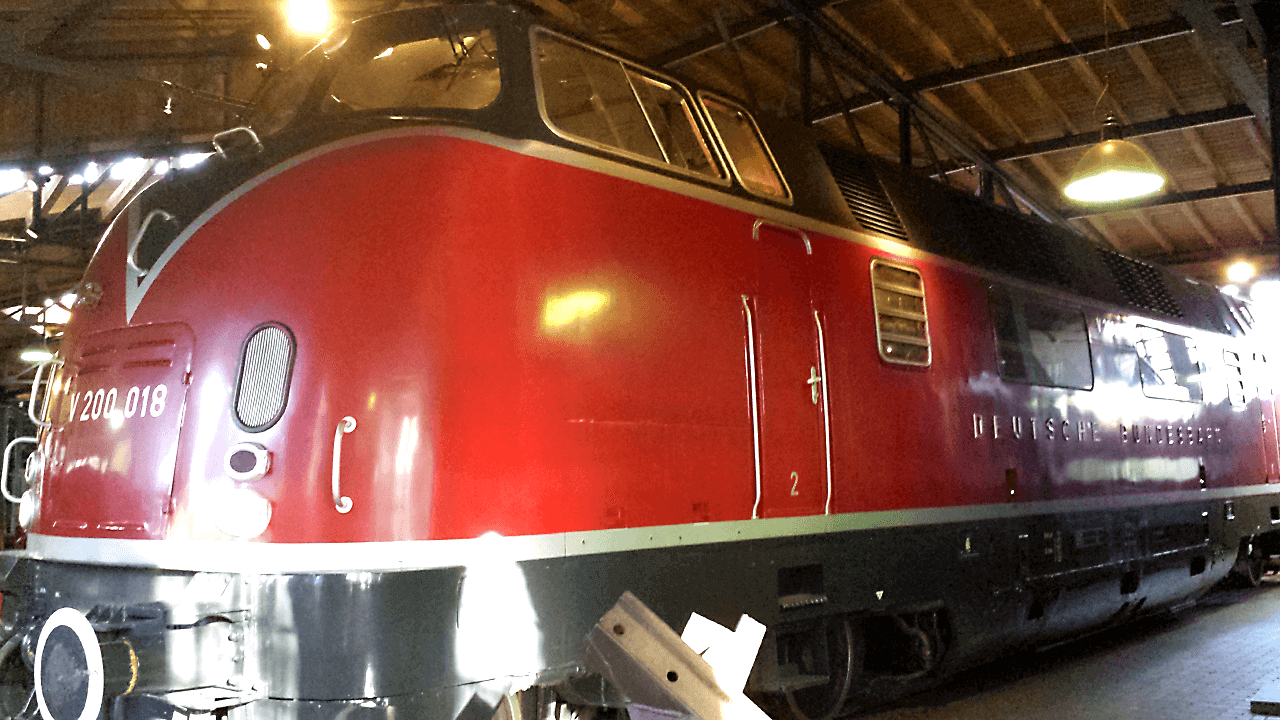DB Class V 200 - The DB's diesel mainline locomotive
The diesel locomotive DB Class V 200 was already under construction in 1956 and served as a resource for a variety of purposes. At that time, the diesel locomotive DB series V 200 was manufactured by MaK with 20 machines as well as for the most part by Krauss-Maffei with 61 models. The real task of the diesel locomotive Class V 200 was to transport high-quality and fast trains that were on the main routes in Germany.
The technical progress, however, ensured that more and more Electric Locomotives rushed to the rails and replaced the diesel locomotive Class V 200 on the main rides. This meant that the diesel locomotive DB Class V 200 was mainly used only in local transport or for the transport of freight cars. Gradually, it turned out in these areas that the DB Class V 200 often reached its limits in terms of performance, so that the Deutsche Bundesbahn replaced it from 1962 with the more powerful variant of the V200.1 and later with the 221 series.
| Manufacturer: | Krauss-Maffei, MaK |
| Length: | 18,470 mm (pre-series), 18,530 mm |
| Numbering: | V 200 001-086, from 1968 220 001-086 |
| Weight: | approx. 80 t |
| Years of construction: | 1953; 1956-1957; 1959 |
| Top speed: | 140 km/h |
| Retirement: | 1984 |
| Engine type: | Maybach MD 650, MTU MB 12 V 493 TZ |
| Train heating: | Steam |
| Number: | 86 |
| Power: | 1618 kW |
| Power transmission: | hydraulic |
| Attraction force: | 235 kN |
| Train protection: | Time-displacement Sifa, Indusi |
| Brake: | single-solvent air brake with additional brake K-GPR mZ later multi-solvent air brake with additional brake WS-GPP2R mZ |
| Axle formula: | B'B' |
| Interesting facts |
|---|
| The diesel locomotive BR V 200 belongs to the construction type B'B'. The construction type has two bogies coupled together in terms of drive, each united with two wheelsets coupled together. More interesting facts |
The cancellation of the DB Class V 200
The locomotives consist of a steel frame, which is equipped with a mounted locomotive box in sheet metal profile construction, thereby creating sufficient space for additional equipment. Since the diesel locomotive Class V 200 was characterized by two engines, there was an ever-increasing need for maintenance, which caused the German Federal Railways to gradually pull them out of rail traffic. Another reason for this was the type of heating, whereby the existing steam heating could not prevail against the electric heaters of other series.
In retrospect, it was found that there is no diesel locomotive DB Class V 200, which was 30 years in the service of the railway. However, some variants were used abroad after they were sold to the Swiss Federal Railways and to Italy. In operational condition are still a locomotive of the Association of Historical Railway Vehicles Lübeck, the Museum Railway Hamm, the Brohltalbahn and a vehicle of the Westfälische Lokomotiv factory Hattingen. In addition, there are still some V200 in museums such as the Nuremberg Transport Museum, the German Museum of Technology Berlin, the Technik Museum Speyer and the Railway & Technik Museum Rügen.

